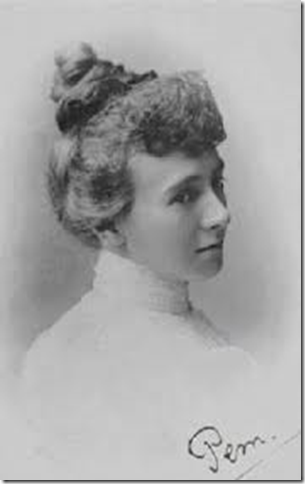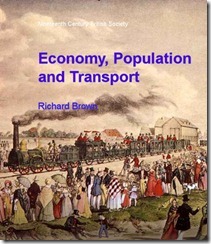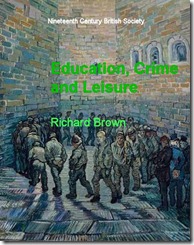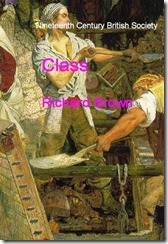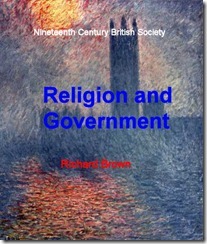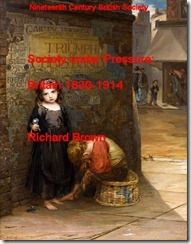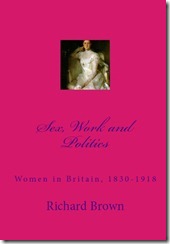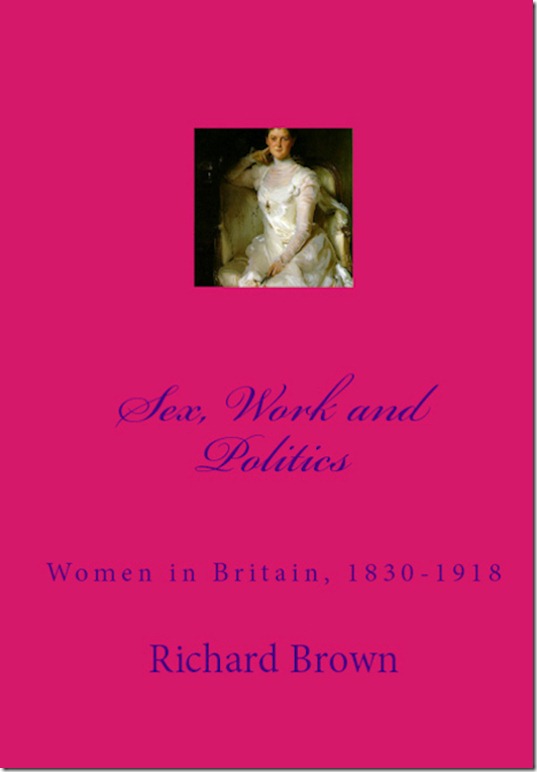The anti-suffragist movement aimed to resist any proposal to admit women to the parliamentary franchise and to Parliament but to maintain the principle of the representation of women on municipal and other bodies concerned with the domestic and social affairs of the community. The more active anti-suffragists were prepared to argue about their role in society, speak on public platforms, write articles and campaign for the causes which they believed allowed them to realise their potential for service and self-expression. As Violet Markham said in 1912:
We believe that men and women are different – not similar – beings, with talents that are complementary, not identical, and that they therefore ought to have different shares in the management of the State, that they severally compose. We do not depreciate by one jot or tittle women’s work and mission. We are concerned to find proper channels of expression for that work. We seek a fruitful diversity of political function, not a stultifying uniformity. [1]
The first meeting of the Women’s National Anti-Suffrage League took place on 21 July with Lady Jersey in the chair. [2] In addition to Mary Ward, its executive committee included Gertrude Bell, the writer and traveller, Ethel Bertha Harrison, a writer and reformer and Joseph Chamberlain’s daughter Beatrice, an active social worker. A small number of men were already actively involved in the League including John Massie and Heber Hart on its executive committee. The first issue of The Anti-Suffrage Review appeared in December 1908 that, especially when Mary Ward wrote for it, gave some intellectual respectability to the anti-suffragist cause. The organisation also included ultra-conservatives such as Lady Havesham and Frances Low who did not believe in Ward’s progressive social feminist view of ‘civic housekeeping’ but in maintaining the separate sphere ideology and resisted her desire for a ‘Forward Policy’. This linked anti-suffragism to calls for social reform, women’s participation in local government and to womanly self-development through the performance of womanly duties to God, family, nation and empire. It emphasised women’s service not women’s rights. [3] Difference between reformers and conservatives did not prevent them collaborating in a membership drive and publicity campaign that resulted in over eighty branches by July 1909.

Anti-Suffrage postcard, 1908
The rhetoric that informed both ‘anti’ and suffragist political argument was remarkably similar. Ward’s view of differentiated citizenship celebrated the distinctive roles of men and women in society while suffragists emphasised what men and women had in common. [4] Her reforming imagination, commitment to women’s service, and sympathetic literary depictions of friendships between women, the hallmarks of much of her fiction, lend weight to the argument that there is more common ground between suffragists and ‘antis’ than is sometimes supposed. [5] Suffragists and anti-suffragists shared beliefs in sexual difference but disagreed about the extent to which women should carry their particular gifts to the national arena. Suffragists believed that women should reshape national government through the vote, ends with which anti-suffragists disagreed. Millicent Fawcett always considered that Mary Ward was a social reformer whose forte was philanthropic work and that she had somehow wandered into the wrong camp on women’s suffrage.
The earliest achievements of the anti-suffragists were impressive. The Women’s Anti-Suffrage League expanded rapidly and developed a considerable number of branches throughout Britain. In December 1908, it had 2,000 members and by October 1909, around 10,000 members. By April 1910, there were 104 branches; and by April 1912, 235 branches. Analysis of the branch distribution shows that London and the southeast accounted for most of the anti-suffragist effort, 42 per cent of the total membership between 1908 and 1914. The League’s regional pattern of support paralleled Edwardian rural and suburban Conservatism and Brian Harrison argues that, despite its elitist leadership, it appealed widely to the conservative working-class. [6] The movement was weaker in the industrial north and in Scotland, Wales and Ireland. [7] By 1910, Scottish anti-suffragists had established their own affiliated anti-suffrage organisation, the Scottish National Anti-Suffrage League, presided over by the duchess of Montrose and in 1913 affiliated to the League as the Scottish League for Opposing Woman Suffrage. The annual council of the National League for Opposing Woman Suffrage was told in 1914 that membership stood at ‘42,000 subscribing members and 15,000 adherents at the end of six years' work…a very good record which compares very favourably with the records of the associations organised by our opponents’. [8] This total included the members of the affiliated Scottish League for Opposing Woman Suffrage. Other records reveal that about five out of every six members of the League were female, and that branch leadership remained largely in the hands of women.

Charles Lane Vicary, Ye Anti Suffrage League, (Printed and Published by the Artists Suffrage League), 1908
In December 1908, male anti-suffragists launched a parallel and much less active Men’s Committee for Opposing Female Suffrage. Although it was skilled at fundraising, it failed to gain popular support. Dominated by the imperialist leadership of Lord Cromer and Lord Curzon, it was a collection of major public figures rather than a nationwide movement. Its supporters also included Rudyard Kipling, and A. V. Dicey but also newspaper editors such as Charles Moberly Bell, editor of The Times and John St Loe Strachey, editor of The Spectator. In a still largely deferential society, a great strength of the anti-suffragists was the list of great men who gave it support. Both groups were set up to be non-party organisations and had members from all parties even though Harrison maintains the Conservatives were the natural home of the anti-suffragists.
Within two years it was clear that both Leagues faced serious practical problems. The Women’s League had little parliamentary influence or sufficient campaign funds, while the Men’s League lacked active campaigners and female support. It was its success in raising a £20,000 anti-suffrage fighting fund that made the prospect of a merger enticing to the anti-suffrage women. They were eager to put their faith in complementary gender roles into practice though not at the cost of abandoning important priorities of the Women's League. In addition, both Leagues feared that a majority of MPs were now in favour of giving votes to women householders. Amalgamation was achieved after months of tortuous negotiation over the name of the new organisation, its constitutional gender balance and the continued endorsement by the Women's League of women's local government work within the objectives of the new, mixed-sex league. [9] In December 1910 the National League for Opposing Woman Suffrage was formally launched, with Lord Cromer as president, Lady Jersey as vice-president and an executive of seven men and seven women. [10]

Between 1911 and 1914, the League’s performance was disappointing, though its achievements were far from negligible.[11] Lord Cromer wanted to focus the campaign on Parliament but anti-suffrage interventions during by-elections proved ineffective and the League was notably unsuccessful in influencing the views of Parliament itself. A parliamentary committee of the League led by Mary Ward’s son Arnold, MP for Watford between 1910 and 1918, failed to rally a united opposition, even though growing militancy checked the advancing tide of parliamentary suffrage support. [12] In addition, the League’s leadership suffered from divisions exacerbated by Cromer’s difficulty in collaborating with independently-minded women. Supporters of the ‘forward policy’ attempted to press ahead with a positive agenda of local government work and womanly social action, initially organised under the auspices of a separate women’s Local Government Advancement Committee and publicised through the Anti-Suffrage Review. Despite opposition from the League’s male leaders, Mary Ward firmly believed in increasing the role of women in municipal affairs and that the League should do more than occupy itself with ‘opposition and denial’. Lord Cromer and Lord Curzon were hostile to such diversionary activity, a position reinforced by their growing awareness that the anti-suffrage women themselves were far from united behind such a programme. Their hostility was further aggravated by local government campaigning that cut across party politics and appeared to set women’s perceived social needs above those of the anti-suffrage movement.

Although local government work was gradually relegated from the League’s programme during 1911 and 1912, Ward’s backing of Dr Elizabeth Jevons as a candidate for a seat on the London County Council contributed directly to Cromer’s resignation in early 1912. He may have been right in his belief that any attempt to promote wider women’s issues would be politically divisive but his resignation was testimony to the problems he encountered in holding this particular line. He commented to Curzon that he did not have the ‘health, strength, youth and I may add, the temper to go on dealing with these infernal women’. [13] Efforts by the League’s leaders to impose masculine authority within their own headquarters proved equally counter-productive. Lucy Terry Lewis, the leading Women’s League administrator, refused to be upstaged by inferior male colleagues and drew support from fellow supporters of the ‘forward policy’. [14] Though she was driven from office shortly before Cromer’s resignation, male replacements proved ineffective and antagonised the leading women. Peace was only restored when Lord Curzon, Cromer’s successor as president, acknowledged the formidable skills of Gladys Pott, another woman administrator during 1913. [15]
The League could justifiably claim some success in holding a number of large-scale public meetings that demonstrated the harmonious collaboration of male and female opponents of the vote. The most famous, at the Albert Hall on 28 February 1912, attracted 20,000 ticket applications and an audience of over 9,000.[16] Violet Markham, a Liberal Unionist, imperialist and womanly social reformer, made an imposing defence of progressive anti-suffragism, alongside male speakers from both major parties. The marchioness of Tullibardine had almost equal success at a 6,000-strong meeting in Glasgow a few months later, though on that occasion the most striking speech was undoubtedly Lord Curzon’s resounding defence of the British Empire against the suffragist threat. [17] Despite these successes, the anti-suffragists proved less efficient than the suffragists. There is little evidence of working-class women taking part in the anti-suffrage movement though there is some evidence for tacit male working-class support. They also found it difficult to recruit younger middle-class women. Anti-Suffrage League meetings were drab and its press office less effective than either the WSPU and NUWSS. Nonetheless, the League did have most of the press on its side ensuring it communicated its message effectively.
With the outbreak of war, the League swiftly suspended all campaigning, devoting its resources to the war effort. [18] This proved difficult to maintain when patriotic suffragists grasped every opportunity to strengthen their cause through well-advertised war service. Though weakened by the departure of male supporters, the League continued to publish its journal and maintained a low level of anti-suffrage propaganda throughout the war. By 1916, some London branches were demanding a more active stance. During the following year the suffrage issue was again before parliament and women leaders were once again to the fore at the highest levels of the League. By this stage, many long-term supporters including Lord Curzon were prepared to bow to the inevitable. By contrast, Mary Ward, confident in the latent anti-suffragism of the silent majority of British women, was acting chairman as the Representation of the People Bill passed through parliament but her frantic last-minute attempts to check its progress failed. At a determinedly positive final meeting of the League in April 1918, Lady Jersey, Mary Ward, Gladys Pott and Beatrice Chamberlain emphasised the justice of their cause to a post-war future in which women would need to be educated to use their votes wisely. For them, the gendered values of British womanhood remained worthy of defence.
[1] Markham, Violet, Miss Violet Markham’s Great Speech at the Albert Hall, (National League for Opposing Woman Suffrage), 1912.
[2] Ibid, Bush, Julia, Women against the vote: female anti-suffragism in Britain, pp. 163-192.
[3] Bush, Julia, ‘British Women’s Anti-suffragism and the Forward Policy, 1908-14’, Women’s History Review, Vol. 11, (3), (2002), pp. 431-454.
[4] This position was evident in the 1889 Appeal and especially in Harrison Ethel B., The Freedom of Women: an argument against the proposed extension of the suffrage to women, (Watts & Co.), 1908.
[5] For the contradictions in Ward’s work see, Saunders, Valerie, Eve’s Renegades: Victorian Anti-Feminist Women Novelists, (Palgrave), 1997, and Sutton-Ramspeck, Beth, ‘Shot out of the Canon: Mary Ward and the claims of conflicting feminisms’, in Thompson, Nicola Diane, (ed.), Victorian Women Writers and the Woman Question, (Cambridge University Press), 1999, pp. 204-222.
[6] Ibid, Harrison, Brian, Separate Spheres: The Opposition to Women’s Suffrage in Britain, pp. 140-141.
[7] For the regional impact of anti-suffragism see, ibid, Wallace, Ryland, The Women’s Suffrage Movement in Wales, 1868-1928, pp. 184-218, and ibid, Leheman, Leah, A Guid Cause: The Women’s Suffrage Movement in Scotland, pp. 70, 106, 192, 215.
[8] Anti-Suffrage Review, Vol. 69, (July 1914), p. 110.
[9] Ibid, Harrison, Brian, Separate Spheres: The Opposition to Women’s Suffrage in Britain, pp.128-130.
[10] Owen, Roger, Lord Cromer: Victorian Imperialist, Edwardian Proconsul, (Oxford University Press), 2004, pp. 374-378, examines his anti-suffragist activities.
[11] Ibid, Sutherland, John, Mrs Humphry Ward: Eminent Victorian, Pre-eminent Edwardian, pp. 310-337, considers Mary Ward’s role between 1910 and the outbreak of war.
[12] Arnold Ward was dropped by the Conservative Party as their candidate in Watford for the 1918 General Election. His anti-suffragist credentials would have been a liability in the first election when women could vote.
[13] Cromer to Curzon, 8 February 1912, cit, ibid, Harrison, Brian, Separate Spheres: The Opposition to Women’s Suffrage in Britain, p. 134.
[14] Ibid, Harrison, Brian, Separate Spheres: The Opposition to Women’s Suffrage in Britain, pp.131-132.
[15] Ibid, Harrison, Brian, Separate Spheres: The Opposition to Women’s Suffrage in Britain, p. 184.
[16] Ibid, p. 149.
[17] Ibid, pp. 43, 75.
[18] Ibid, Bush, Julia, Women against the vote: female anti-suffragism in Britain, pp. 257-287, examines the anti-suffragists during the War.
